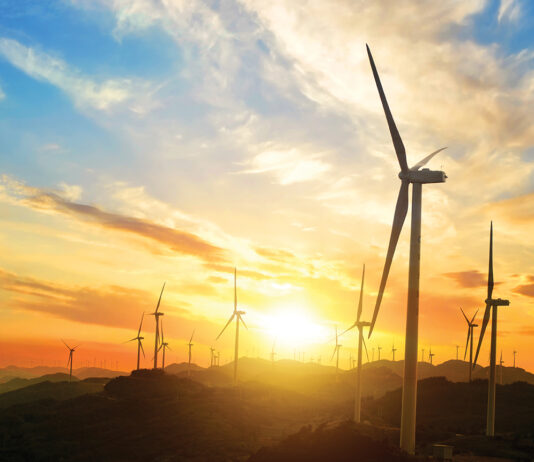
Introduction to Present-Day Geopolitics
Geopolitics has played a large role in creating the bear market and economic slowdown in 2022. These unfortunate conditions will continue into 2023, or at least until major changes occur. Investors should remain cautious and conservative heading into the New Year.
There is a structural imbalance in the geopolitical system. Russia, China, Iran and others are rejecting the United States’ global leadership. They now strive to create spheres of influence in their regions that are separate from the U.S.-led democratic world order. The U.S. is internally divided. This divisiveness has created a window of opportunity for these nations to continue to do so. Moreover, each of them is domestically unstable and may seek to distract their populations from their woes through conflicts abroad. This dynamic is clear with Russia and Iran in 2023. It may or may not prove to be the case with China.
Investors have very little certainty about U.S. policy due to the 2024 election, not to mention Russian, Chinese, and Iranian policies. If these revisionist states achieve their spheres of influence, the world order will rupture and the global economy will fragment. If they fail, then the world order could be reinvigorated—but that will not happen until 2025 at the earliest due to the immense influence and uncertainty around U.S. policy. So the world order is unstable and could get worse before it gets better.
This geopolitical predicament is causing immediate conflicts that disrupt economic activity, such as the war in Ukraine. It is also driving up the odds of conflicts in the Middle East in the short run. Similarly, this is driving the geopolitical risk in East Asia is also increasing in the long run and potentially in the short run.
What Can Improve Our Geopolitical Environment?
The U.S. needs to improve its understanding and relationships with Russia, China and Iran. Specifically, a Ukraine ceasefire, a resumption of EU-Russia energy trade, a de-escalation of the U.S.-China trade and tech war, a solid reaffirmation of the status quo in the Taiwan Strait and a U.S.-Iran nuclear agreement. All of these positives could happen in 2023. However, few of them are likely. A resumption of Russian energy flows would be the likeliest candidate for a positive geopolitical surprise in 2023, but that may not happen until late in 2023 if at all.
Presently, none of these positive surprises are rising in odds, whereas negative surprises are still likely. Russian military leaders have intensified their attacks on critical infrastructure in Ukraine and are preparing to renew their general offensive. Russia is forming a closer military alliance with Iran as a supplier not only of drones, but also of ballistic missiles. Hence, the U.S. is moving to provide Ukraine with upgraded missile defense and continued robust military and financial support. Russia has threatened to attack these defensive systems in Ukraine.
How Are These Nations Attempting to Establish Their Sphere of Influence?
Russia and Iran
Russian strategy has backfired across the board. This makes President Vladimir Putin’s regime both dangerous and unpredictable. Russia is threatening to cut off European oil and gas further. This coincides with the European Union trying to implement an oil embargo, sanctions on shipping and insurance and a price-cap scheme. Europe has not resolved its long-term energy crisis resulting from the break in Russian energy imports, so its economy faces more downside surprises.
The E.U. is losing the willingness to impose stricter sanctions on Russia, which is incentivizing Russia to put more pressure on Europe, via energy squeeze and refugee flows. Moscow wants to create a better environment for diplomatic negotiations. They hope that it will result in a de facto acceptance of Russia’s territorial annexations. The implication is that negative news will precede positive news.
Iran is attempting to defeat revolutionary social forces at home through police repression and provocative foreign policy abroad. Not only is Tehran helping Russia in Ukraine. It will also likely stage militant actions in the Middle East to warn the US and Israel against efforts to destabilize it.
Saudi Arabia will remain geopolitically aligned with the United States in the context of Iranian regional aggression, Russo-Iranian cooperation, and Chinese instability and inability to project power in the Persian Gulf. But Crown Prince Mohammed bin Salman and US President Joe Biden do not see eye to eye. OPEC production will react to global economic conditions, up or down, and will not accommodate the US election cycle.
Given the separate but related Russian and Iranian dynamics, the potential for global energy shocks is high in 2023. Large and unexpected supply disruptions should be taken as a base case.
China
Oil supply shocks might not push up prices for very long in the context of a global slowdown, but prices will rise before they fall because of a simultaneous shift in Chinese policy to try to stabilize the economy.
General Secretary Xi Jinping has changed tactics after consolidating power at the twentieth national party congress in October. He is relaxing social restrictions and reopening the economy to prevent Covid-19 from exacerbating economic slowdown and social unrest any further. He will continue to provide monetary and fiscal stimulus in 2023, while easing heavy-handed regulations, including on the ailing property sector. The implication is that Chinese growth will at least temporarily stabilize—which is positive for global commodity prices in the short run.
However, China faces a historic confluence of internal and external risks, including structural debt-deleveraging, structural drivers of social unrest and structural competition with the U.S. It’s anticipated that 2023 will not provide much respite from these concerns. U.S.-China re-engagement will not be in the cards until China recognizes that a stimulus is not the solution to their structural socio-economic problems. So, any boost to commodity prices from Chinese stabilization in 2023 will be overshadowed by medium-term and long-term structural trends that are negative for Chinese growth potential.
In Short:
Geopolitics point toward a temporary Chinese economic stabilization with persistent energy supply problems. This is expected to push commodity prices up until the recession drags them back down. A global recession is likely in 2023-24, aside from geopolitics due to high inflation and restrictive monetary policy. Any large new energy shocks will weigh on private consumption and corporate profit margins. This will reinforce uncertainty over the path of headline inflation and central banks’ interest rate hikes. The good news for commodities is that supply constraints will likely impose a higher floor than in the recent past.
Investors need to stay cautious and conservative in 2023 and favor government bonds over stocks, U.S. stocks over global stocks and defensive sectors over cyclical sectors.

Author Bio
Matt Gertken is BCA Research’s Chief Strategist, Geopolitical Strategy and US Political Strategy. He oversees the firm’s coverage of market-relevant policy developments across the world. Prior to joining BCA in 2015, Matt worked as a Senior Analyst at Strategic Forcasting, Inc (Stratfor) and in various academic and publishing roles. Matt holds a MPhil from the University of Cambridge and a Ph.D. from the University of Texas in Austin.
















